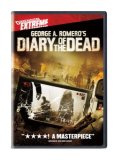| Reviews & Columns |
|
Reviews DVD TV on DVD Blu-ray 4K UHD International DVDs In Theaters Reviews by Studio Video Games Features Collector Series DVDs Easter Egg Database Interviews DVD Talk Radio Feature Articles Columns Anime Talk DVD Savant Horror DVDs The M.O.D. Squad Art House HD Talk Silent DVD
|
DVD Talk Forum |
|
|
| Resources |
|
DVD Price Search Customer Service #'s RCE Info Links |
|
Columns
|
|
|
George A. Romero's Diary of the Dead
- Debra
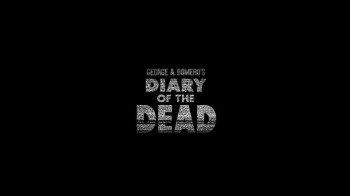
The Movie
I just spent more than $60 to fill up my car's fuel tank, the first time in my life I have ever paid that much. I don't know about you, but that frightens me. So when I witness a world where zombies feast on human flesh--and where gas becomes as scarce as it does in Diary of the Dead, I'm scared, y'all. And that's why I love George Romero so damn much...he frequently finds multiple ways to freak me out.
Early into the director's fifth foray into the zombie universe--a genre he virtually gave birth to--a group of student filmmakers becomes frustrated with their horror movie shoot in the woods. The senior project of their aspiring director runs into a few glitches, prompting crew member Tony to vent his anger: "Stupid fucking mummy movie!" His sentence is quickly finished by their professor, who enthusiastically chimes in: "With an underlying thread of social satire!" I was expecting a wink at the camera, but Romero doesn't want to be too obvious, right?
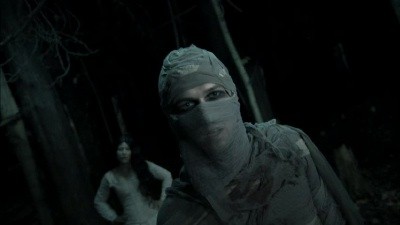
It's been a few years since the horror icon's last effort, Land of the Dead--which was the first of his zombie movies that had some (unwanted) studio control. For this entry, Romero gets back to his low-budget, independent roots. And there are some important things you need to know about Diary before seeing it:
- The story starts at the beginning of the crisis; forget the progression from his other classics, including Night of the Living Dead (1968), Dawn of the Dead (1978) and Day of the Dead (1985).
- The film unfolds from a subjective, first-person viewpoint--the action is viewed through the lenses of two cameras held by the characters. Think Cloverfield and The Blair Witch Project.
- There are less zombies and less gore than you're used to seeing.
- There are lots of not-so-subtle jabs at the government, the military, the media, reality TV fame whores--and plenty of others.
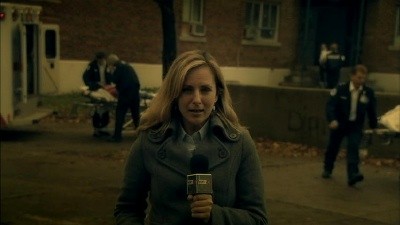
If any of those facts make you grumpy, leave now--this movie isn't for you. This is a horror film, but it's one with a lot of subtext, one that makes you think a little. At heart, it's a commentary on the state of the world, and the zombies are just a representation of any number of enemies or fears. Insert your favorite, and the message is still there. It's a vision of the future, one that seems a lot more possible now than it did before 9/11 changed everything. Have we seen Romero flirt with these ideas before? Absolutely...but that doesn't make this work any less effective. It's thought-provoking, scary and fun, and how many times can you say that about a horror film?
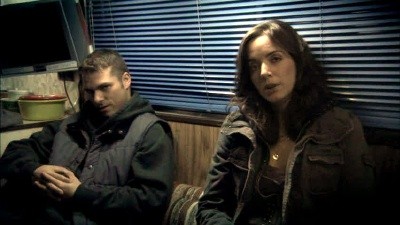
Diary starts with some chilling news crew footage that quickly finds its way onto the internet after reports that the dead are returning to life surface. Homeland Security raises the terror alert level to orange, but insists it's probably just a virus. We hear the voice of Debra Moynihan (Michelle Morgan), who is speaking to us days later. She has put together the finishing touches on what we are watching--her boyfriend Jason's film, which quickly ditched the mummy idea in favor of a documentary chronicling the erupting hysteria.
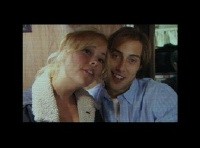 Along for the ride are some University of Pittsburgh cohorts: blond Southern spitfire Tracy (Amy Lalonde) and her boyfriend Gordo (Chris Violette); aspiring director Tony (Shawn Roberts), an optimist who believes the military will quickly sort things out; spectacled crew member Eliot (Joe Dinicol); mummy actor Ridley (Philip Riccio), who soon ditches his pals to head to his parents' home in Philly; Mary (Tatiana Maslany), whose Winnebago becomes their mode of transport; and professor Andrew Maxwell (Scott Wentworth), an older English alcoholic.
Along for the ride are some University of Pittsburgh cohorts: blond Southern spitfire Tracy (Amy Lalonde) and her boyfriend Gordo (Chris Violette); aspiring director Tony (Shawn Roberts), an optimist who believes the military will quickly sort things out; spectacled crew member Eliot (Joe Dinicol); mummy actor Ridley (Philip Riccio), who soon ditches his pals to head to his parents' home in Philly; Mary (Tatiana Maslany), whose Winnebago becomes their mode of transport; and professor Andrew Maxwell (Scott Wentworth), an older English alcoholic.
Called "The Death of Death", the film is meant to show the truth, especially after Jason (Joshua Close) and Debra notice that TV news reports are playing with the facts: "The media were lying to us, or the government was lying to them." The documentary is comprised of footage shot by the students' cameras, and becomes increasingly terrifying as they search for safety. The main shots are interspersed with footage downloaded from the internet, security cameras, cell phones, helmet cams...anything that captures the chaos.
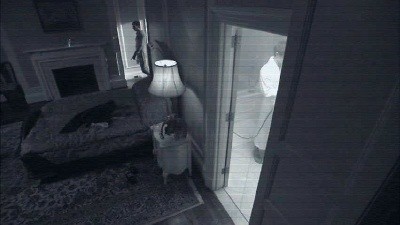
Watching this, I was frequently reminded of Brian De Palma's Redacted, an equally searing indictment on the government and new media. The idea that a camera is just as dangerous as a gun is frequently posed ("If it didn't happen on camera, it's like it didn't happen, right?"). Romero also links the frenzy to post-9/11 fears: How helpful is it to just keep killing? ("Everyone who dies is gonna come back to kill somebody else, and on and on.") There are also parallels to Hurricane Katrina, with a lack of disaster preparedness leading to riots and looting as a group of survivalists ("For the first time in our lives, we got the power") takes over a warehouse, the setting for one of many spooky sequences.
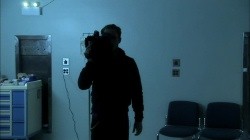 But the media takes the biggest hit, whether it's vigilant bloggers, broadcast news or even documentary filmmakers. At what point--if ever--do you put down the camera and help someone in need? Jason is rarely seen here, and he isn't a very sympathetic character (although one welcome scene finally gives us a more human look at him). "Seeing things through a lens...you become immune," says Debra. "You're supposed to be effected, but you're not...whatever happens around us, no matter how horrible it is, we just wind up taking it all in stride. Just another day. Just another death." And we know from the start that Debra is manipulating us, having added edits and music to her footage, proof that Romero isn't afraid to poke fun at filmmakers, too. "What gets into our heads when we see something horrible?" asks Debra. "Something holds us. But we don't stop just to help. We stop to look."
But the media takes the biggest hit, whether it's vigilant bloggers, broadcast news or even documentary filmmakers. At what point--if ever--do you put down the camera and help someone in need? Jason is rarely seen here, and he isn't a very sympathetic character (although one welcome scene finally gives us a more human look at him). "Seeing things through a lens...you become immune," says Debra. "You're supposed to be effected, but you're not...whatever happens around us, no matter how horrible it is, we just wind up taking it all in stride. Just another day. Just another death." And we know from the start that Debra is manipulating us, having added edits and music to her footage, proof that Romero isn't afraid to poke fun at filmmakers, too. "What gets into our heads when we see something horrible?" asks Debra. "Something holds us. But we don't stop just to help. We stop to look."
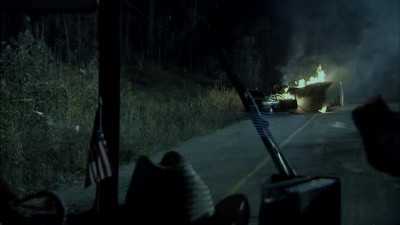
And Romero has us looking at plenty here. Is this film scary? Yes, although not in the way a lot of horror fans like. You see a lot of the louder shocks coming; while those are more obvious, there's another layer to this film that frequently keeps you on edge. The gore is more minimal than usual, but well-placed. The subjective shooting style and long shots necessitated the use of some CGI effects, which are mostly integrated well and used sparingly--making them more effective. I loved the sequence at Debra's house, the conclusion at the mansion and the final, haunting shot (one of many this film offers). And I don't want to give anything away, but the scene at the farm is both hysterical and disgusting. This movie is funny when it wants to be. Who knew the Amish could be so hilarious?! (I also got a kick out of a sequence at the end where life imitates art.)
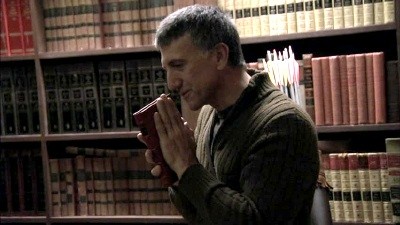
The acting here is sufficient; most of the characters don't have much development except a few leads, who keep a (rightfully) gloomy demeanor throughout. As Ridley, Philip Riccio steals the show and has the most fun, while Morgan and Roberts (as Debra and Scott) are the strongest, most believable actors. It all goes into creating that low-budget, independent spirit that Romero embodies so well. In an era when horror is filled with zero originality, it's refreshing to see a filmmaker put some genuine thought and purpose into his work.
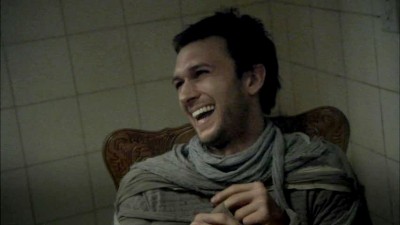
The DVD
Video:
Shot with high-def video cameras and presented in an anamorphic 1.85:1 transfer, this is low-budget for George Romero--but it still puts the low-budget of yesterday to shame. This is a very dark film, and many of the sequences are bathed in cold green and blue shades, while others are seen thorugh brown tones. There's a lot of darkness with details drowning in black, but that's intentional. I imagine this looks just like it was intended to. My only issue is some minor color saturation issues in the pitch-black scenes.
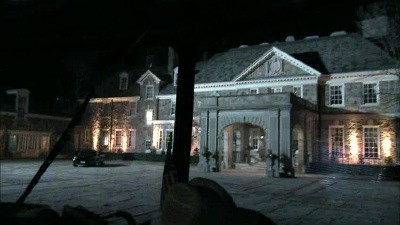
Audio:
Presented in Dolby 5.1 with optional English and Spanish subtitles, this track creeps up on you in beautiful ways. Gun shots, creaky doors, night crickets, birds in the woods, mysterious footsteps...just enough to keep you looking behind and under your couch.
Extras:
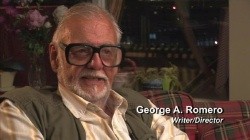 For a low-budget indie horror film that barely saw any theater time, this DVD comes packed with great extras. Leading the way is the five-part documentary "For the Record: The Making of Diary of the Dead", clocking in at 78 minutes (each part must be selected separately). Part 1 is "Master of the Dead: George Romero" (13:00), a conversation with the writer/director. "It was wonderful and very sort of liberating to go back and do a film where I wasn't answering to anybody," he says. "The risk was low, I could afford to gamble a little bit." We learn that this was originally conceived as a direct-to-DVD film given its super small budget. The film's producers also chime in with their thoughts on Romero (I could have really done without the awfully distracting jazzy elevator music in the background, which eventually disappears).
For a low-budget indie horror film that barely saw any theater time, this DVD comes packed with great extras. Leading the way is the five-part documentary "For the Record: The Making of Diary of the Dead", clocking in at 78 minutes (each part must be selected separately). Part 1 is "Master of the Dead: George Romero" (13:00), a conversation with the writer/director. "It was wonderful and very sort of liberating to go back and do a film where I wasn't answering to anybody," he says. "The risk was low, I could afford to gamble a little bit." We learn that this was originally conceived as a direct-to-DVD film given its super small budget. The film's producers also chime in with their thoughts on Romero (I could have really done without the awfully distracting jazzy elevator music in the background, which eventually disappears).
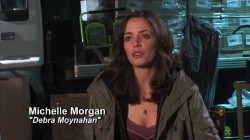 Part 2 is "Into the Camera: The Cast" (16:50), a conversation with seven of the main players: Michelle Morgan (Debra), Joshua Close (Jason Creed), Amy Lalonde (Tracy), Shawn Roberts (Tony), Philip Riccio (Ridley), Scott Wentworth (Professor Maxwell) and Joe Dinicol (Eliot). Most of them talk about their characters, and let's face it--that's not the movie's strength. It's a tad boring, but a few good thoughts come out, and Riccio once again is the most memorable.
Part 2 is "Into the Camera: The Cast" (16:50), a conversation with seven of the main players: Michelle Morgan (Debra), Joshua Close (Jason Creed), Amy Lalonde (Tracy), Shawn Roberts (Tony), Philip Riccio (Ridley), Scott Wentworth (Professor Maxwell) and Joe Dinicol (Eliot). Most of them talk about their characters, and let's face it--that's not the movie's strength. It's a tad boring, but a few good thoughts come out, and Riccio once again is the most memorable.
Part 3 is "You Look Dead!: Make-up Effects" (10:40), which is led by "Zombie Doctor" Greg Nicotero. He and his crew talk about the challenge of creating effects made harder given the wide angles and continuous shots Romero mandated. Part 4 continues the theme with "A New 'Spin' on Death: Visual Effects" (18:44) as Steven Lewis and Colin Davies of Toronto's Spin VFX talk about the CGI work they created. Both of these sequences are fun to watch, especially the CGI segment that addresses many of the visual challenges.
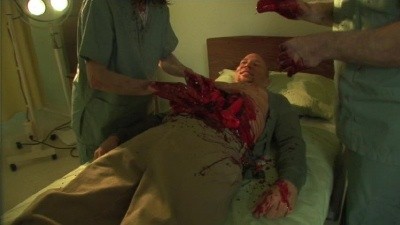
Part 5, "A World Gone Mad: Photography and Design" (20:09), is perhaps the most entertaining. Director of photography Adam Swica talks about the camera becoming its own character in the movie; costume designer Alex Kavanaugh shares some of her decisions for the characters and the effects, like suggesting they use a paper gown for one scene--and her request for no zombie bites through fabric ("I have a personal issue with bites going through wardrobe. Have you ever tried to bite through a shirt? It's very difficult!"); and production designer Rupert Lazarus talks about some of the memorable locations, and his desire to help tell back stories through his decisions with the set designers.
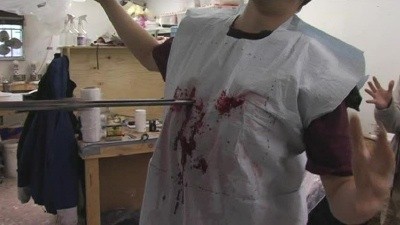
Up next is a full-length audio commentary with Romero, editor Michael Doherty and Swica (who doesn't say much). The bulk of the commentary is geared toward the technical challenges of making a lot of the sequences seem like one continuous shot. Doherty points out some of the "cheat" edits, while Romero praises one long shot that was edit free (the entry into Debra's house). Romero--always interesting and always enthusiastic--also touches upon some of the themes, and how everyone is becoming a filmmaker: "The whole world is a camera...CNN invites people: 'Hey, if there's a tornado in your town, get me some footage, I'll put it on the air and send you a coffee mug!'" he says. "I'm sure there are people running around with camera phones and video cameras hoping for something terrible to happen." The director notes that his zombie films have two levels: "Underneath is the thoughtful part, but the surface is basically a comic book, and as far as I'm concerned, anything goes." Plenty of other random facts are shared, and this is a fairly interesting listen.
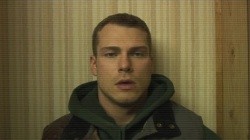 Character Confessionals (20:27) are deleted scenes with Real World-inspired diary confessionals, with four of the characters talking to the camera. Each actor is given three scenes--and a real opportunity to act free of any tricks or effects. I'm glad the bits for Tracy (Amy Lalonde) and Eliot (Joe Dinicol) were dropped, but Michelle Morgan (as Debra) and Shawn Roberts (as Tony) shine, turning in emotionally charged scenes that really work, injecting some heart and soul into the material.
Character Confessionals (20:27) are deleted scenes with Real World-inspired diary confessionals, with four of the characters talking to the camera. Each actor is given three scenes--and a real opportunity to act free of any tricks or effects. I'm glad the bits for Tracy (Amy Lalonde) and Eliot (Joe Dinicol) were dropped, but Michelle Morgan (as Debra) and Shawn Roberts (as Tony) shine, turning in emotionally charged scenes that really work, injecting some heart and soul into the material.
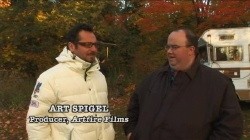 The First Week: A Visit to the Set (4:13) is a short behind-the-scenes feature with independent filmmaker Michael Felsher reporting from his set visit during the film's first seven days of production. He talks briefly with some cast and crew. It's amusing but short, and it seems like there could have been more meat to it. The Roots (1:50) is even shorter, and features Romero discussing the origins of the story. This should have been put in Part 1 of the main documentary. Familiar Voices (5:02) is unedited audio footage of three star performers you probably didn't recognize. Director Guillermo Del Toro, actor/writer Simon Pegg and author Stephen King all supply voices of some of the newscasters you hear over the film's media montages or radio broadcasts. Their raw reads are presented here (in the film, also listen for Wes Craven and Quentin Tarantino).
The First Week: A Visit to the Set (4:13) is a short behind-the-scenes feature with independent filmmaker Michael Felsher reporting from his set visit during the film's first seven days of production. He talks briefly with some cast and crew. It's amusing but short, and it seems like there could have been more meat to it. The Roots (1:50) is even shorter, and features Romero discussing the origins of the story. This should have been put in Part 1 of the main documentary. Familiar Voices (5:02) is unedited audio footage of three star performers you probably didn't recognize. Director Guillermo Del Toro, actor/writer Simon Pegg and author Stephen King all supply voices of some of the newscasters you hear over the film's media montages or radio broadcasts. Their raw reads are presented here (in the film, also listen for Wes Craven and Quentin Tarantino).
Finally, five short films--winners of a MySpace contest--are presented. Grand prize winner "The Final Day" (3:00) is joined by "Deader Living Through Chemistry" (2:51), "Opening Night of the Living Dead" (3:08), "& Teller" (2:53, featuring the quiet comedian sans Penn) and my favorite, "Run For Your Life" (1:39).
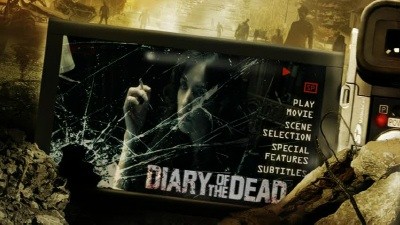
Final Thoughts:
With his fifth zombie feature, George Romero starts with a clean slate and goes back to his low-budget roots. At times scary, funny and thought-provoking, this one skewers the government and the media--and has some bloody fun along the way. Romero has toyed with many of these themes before, but the master still has plenty of tricks up his sleeve. Some horror fans will probably be bored with it, but in this age of uninspiring fright flicks, it's refreshing to see one that has a strong (although not-so-subtle) subtext. This embodies the spirit of independent filmmaking at its best. Highly Recommended.
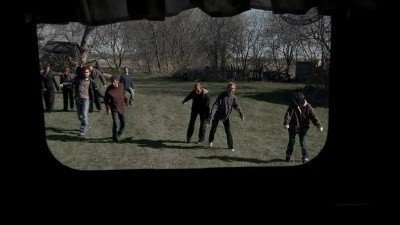
|
| Popular Reviews |
| Sponsored Links |
|
|
| Sponsored Links |
|
|
| Release List | Reviews | Shop | Newsletter | Forum | DVD Giveaways | Blu-Ray | Advertise |
|
Copyright 2024 DVDTalk.com All Rights Reserved. Legal Info, Privacy Policy, Terms of Use,
Manage Preferences,
Your Privacy Choices | |||||||









